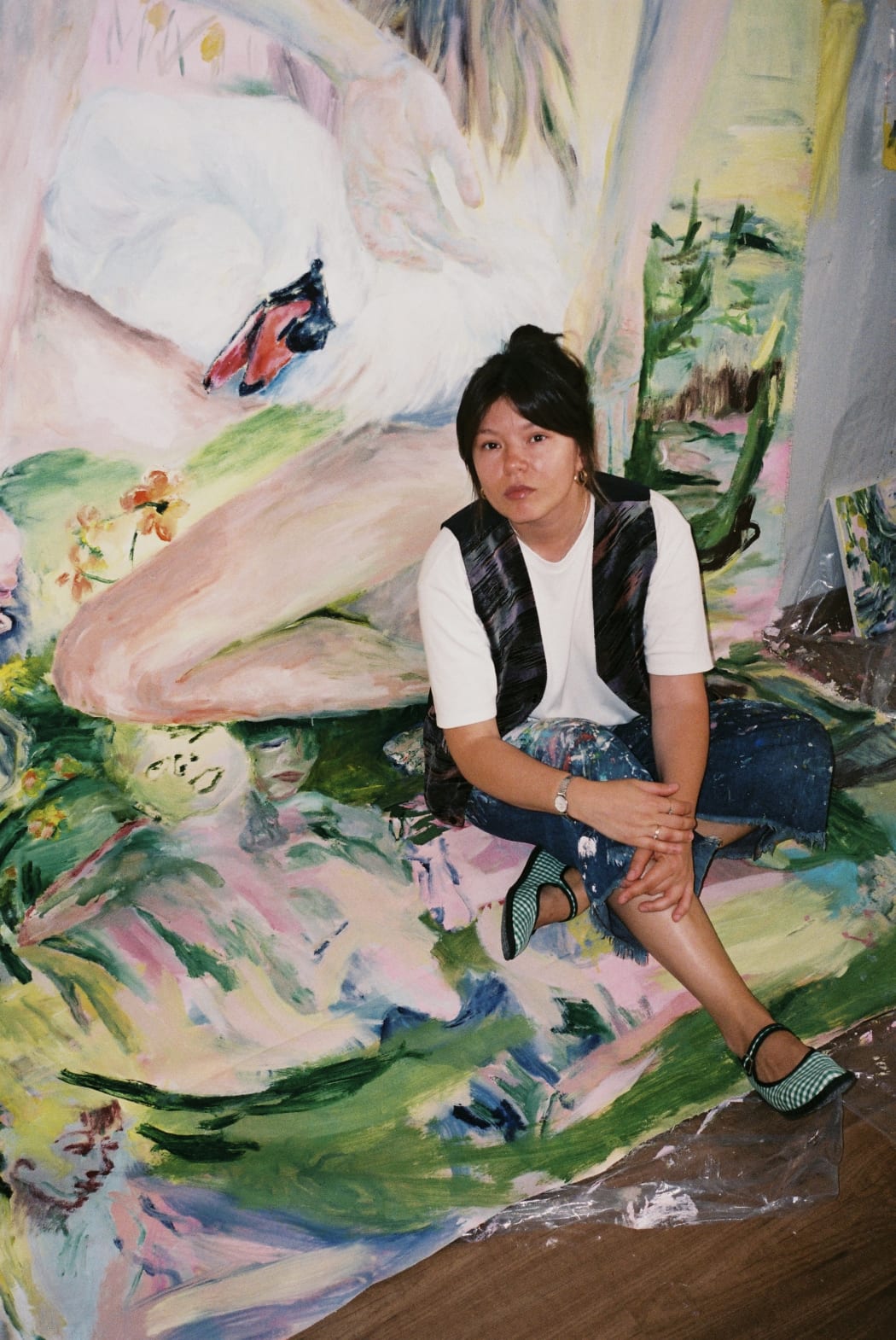
What is your new exhibition about? How did the idea appear?
This project for me is like an all-yellow flash, it captures a certain journey — looking for truth, finding people and losing them. Stretched out arms, reaching out, holding or falling, are coming at you from every angle, there’s something tragic about it. These canvases are filled with metaphors and codes — pilgrim girl, dying swan, carnival ghosts, “Boschian” faces that you can only see if you stand by the vitrine and look down at the falling canvas. Marlene Dumas says: “art doesn’t speak unless it’s spoken to”.
Your eye goes in circle analyzing and dancing through the rhythm, but always comes back to a central piece. I was inspired by two major things for it. The Descent from the Cross — diagonal motion and the game of light, and Maya Plisetskaya in Swan Lake, her long stretching arms, bent body, tilted head.
One of the central themes of your work is corporeality, which has quite a big resonance in many different mediums today. Tell us a little about your method and why you chose painting?
Body, in a way, is abstract and universal. It doesn’t pin the image to a certain period of time, so it speaks many languages. And painting is the most natural medium for me now, I’m still experimenting with formats, learning how to go bigger and bigger in size. I never wear gloves and often work with bear hands, cotton canvas, and flesh, I like it.

You're a former student of Dubossarsky. How important is the figure of the master to you? Do you feel that you are heir to a particular tradition?
Vladimir Dubossarsky has a very strong presence around him, he’s a rock, a true teacher, he doesn’t spill the beans and pass on secrets, but rather creates a very unique environment, pushes you in such a way where you can truly grow if you engage. I think it’s crucial that we met, it immediately made me stronger, protected from wrong temptations early on in my career. I would say I'm a successor to a certain mind frame, how you approach an idea and how you develop your language, the rest is a matter of taste and taste can change. Art and life are connected super strongly and if you know how to ask yourself the right questions, then the right answers come.
This is your second solo exhibition, but your first in an urban space - how did the specifics of the vitrines influence the exposition and the idea of the exhibition?
I absolutely love this format, it’s a very interesting hybrid space, it may seem small but it actually gives you a chance to make a very clear statement. Reminds me of a magic box, whatever’s inside becomes a total installation, hard to spoil. I work with painting and canvas most of the time, and love mixing very big and very small. So I instantly knew that I want to fill up one of the sections with canvas from ceiling to floor, like a stage curtain, to set the right mood.

Do you have any special rituals before starting a new project? How long does it usually take you to create a painting?
To stock up on canvas, have food in the studio, sleep well. That is what makes me happy. I work very energetically, so I can be exhausted really quickly after jumping around the canvas. I’ve learned and trained myself to work quick, but be emotionally and mentally prepared. So the “intellectual” work takes time. Once I know what I want to express, I need to do it without hesitation, catch the moment, not be afraid. I don’t sit with a brush. I move around. That’s my flow.
How do you see your future as an artist in immigration? Maybe there were some non-obvious things in the professional sphere that you had to face after you moved?
Art is global, it doesn’t appreciate boundaries. I don’t see myself as an artist in immigration, an artist is an artist. It’s another step, a chance to speak to a different larger audience.

Are there any upcoming events you'd like to share with us?
I’m kind of fully booked till autumn, which is very cool and I’m grateful to have these opportunities in my life. I’m working on different projects right now — the closest will be with szena gallery.
Photos by Veronika Korenblum